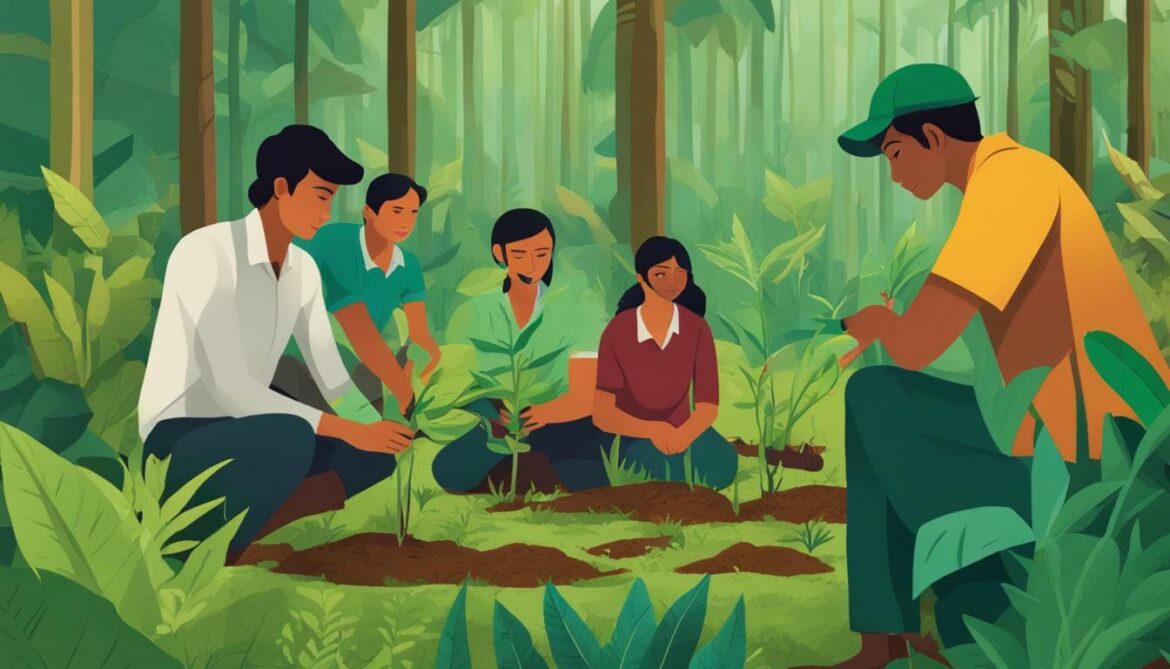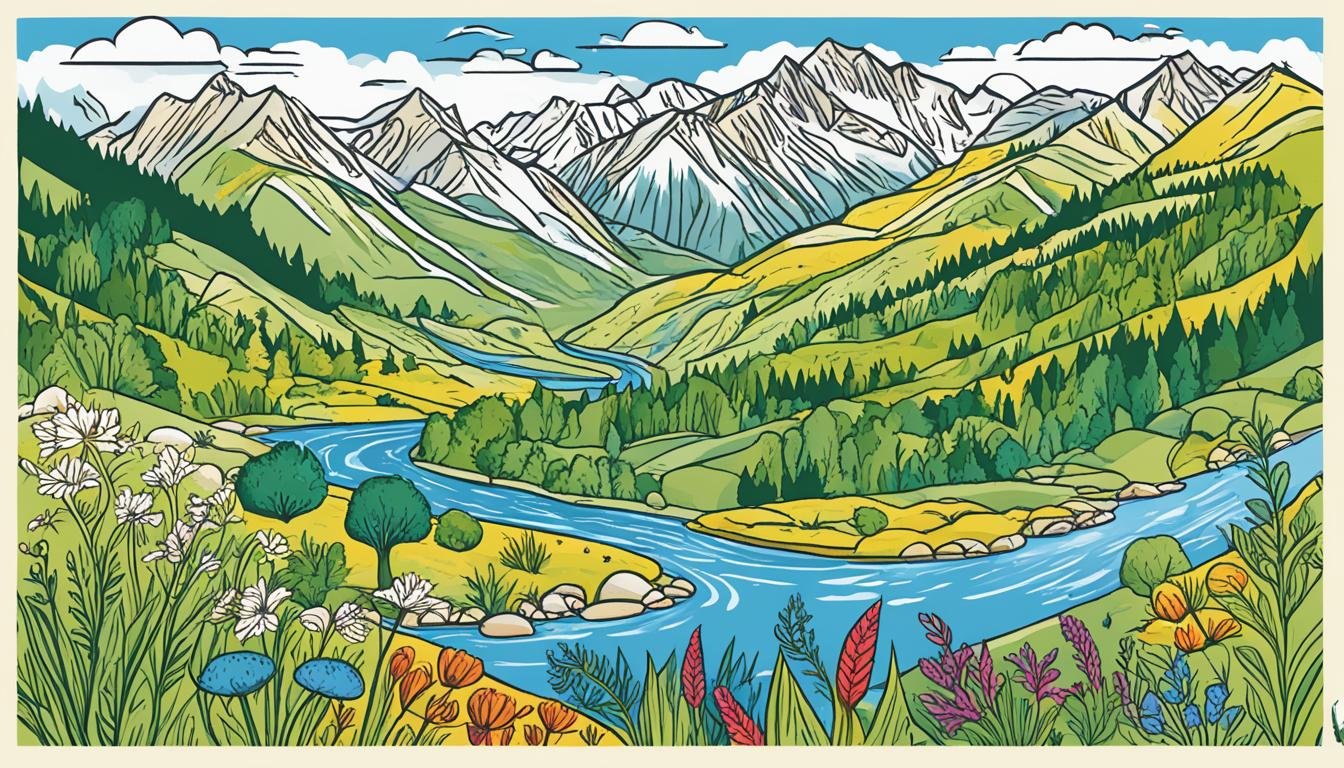Bangladesh Biodiversity: Animal and Plant Species and What Is Under Threat
Bangladesh is home to a rich and diverse array of animal and plant species, but unfortunately, many of them are under threat. The country’s first-ever red list of plant species has revealed that seven species have already been lost in the last century, and at least another five are at risk of extinction. Climate change, pollution, deforestation, and poor management of protected areas have been identified as major drivers of this ecological damage to Bangladesh Biodiversity.
Key Takeaways:
- Bangladesh has lost seven plant species in the last century, with at least five more at risk of extinction.
- Climate change, pollution, deforestation, and poor management of protected areas are major factors contributing to the loss of plant species.
- The Bangladesh Forest Department is working on large-scale planting efforts to protect native plant species.
- Over 1,000 plant species have been assessed, with 127 considered endangered and 262 vulnerable.
- Conservation efforts and further research are crucial to preserving Bangladesh’s biodiversity.
Bangladesh Biodiversity – The Extinction and Endangerment of Plant Species
The first-ever comprehensive assessment of plant life in Bangladesh has revealed that the country has lost several plant species in the last century, with the risk of losing even more. Climate change, pollution, deforestation, and poor management of protected areas have been identified as major drivers behind the ecological damage. The Bangladesh Forest Department is taking steps to protect native plant species through large-scale planting efforts across the country.
In the assessment, seven plant species were identified as extinct in Bangladesh, including fita champa (Magnolia griffithii) and ironweed tree (Memecylon ovatum). These species, however, still exist in other countries in the region. Additionally, five plant species were categorized as critically endangered, including bans pata (Podocarpus neriifolius) and lamba trias orchid (Bulbophyllum oblongum).
Among the assessed flora species, 127 are considered endangered, 262 are vulnerable, 69 are near-threatened, and 271 are of least concern. There’s insufficient data to assess the conservation status of the remaining 258 species. The disappearance of plant species in Bangladesh can be attributed to changing climatic patterns, excessive and random consumption by humans, and inadequate protection measures.
Efforts are being made by the Bangladesh Forest Department to address these challenges and protect plant species. Large-scale planting programs of native trees are being implemented throughout the country. The network of national herbariums also plays a crucial role in preserving threatened plant species. The newly formed national red list serves as an important tool to guide conservation efforts and set priorities for protecting Bangladesh’s plant biodiversity.
| Threatened Category | Number of Species |
|---|---|
| Critically Endangered | 5 |
| Endangered | 127 |
| Vulnerable | 262 |
| Near-Threatened | 69 |
| Least Concern | 271 |
Quote:
“Climate change, pollution, and deforestation are the major factors contributing to the loss of plant species in Bangladesh. It is crucial to take urgent measures to protect and conserve our native plant biodiversity to prevent further losses.” – Saleh Ahammad Khan, Professor of Botany, Jahangirnagar University

The assessment of plant species in Bangladesh highlights the urgent need for conservation and protection measures. The findings serve as a key step towards informed conservation policies and efforts to preserve the country’s plant biodiversity. Continued research and collaboration among government agencies, academic institutions, and environmental organizations are essential for the effective conservation of endangered plant species in Bangladesh.
The Threats to Animal Species in Bangladesh
The diverse wildlife in Bangladesh is facing numerous threats, putting many species at risk of extinction. Habitat loss, climate change, and human intervention are among the primary factors contributing to the decline of animal populations in the country.
According to a study conducted by the Bangladesh Forest Department, habitat loss is one of the biggest threats to animal species in Bangladesh. Deforestation and land encroachments have led to the destruction of natural habitats, forcing many animals to adapt to new environments or face extinction. The loss of forests also disrupts the delicate balance of ecosystems, affecting the availability of food, shelter, and breeding grounds for wildlife.
Climate change is another significant threat to animal species in Bangladesh. Rising temperatures, changing rainfall patterns, and extreme weather events can have a devastating impact on wildlife. Species that are unable to adapt quickly enough may struggle to find suitable habitats or experience disruptions in their life cycles, leading to population decline.
Human intervention in the form of hunting, poaching, and illegal wildlife trade further exacerbates the threats faced by animal species in Bangladesh. The demand for animal products, such as skins, bones, and organs, puts immense pressure on already vulnerable species. Additionally, the expansion of human settlements and infrastructure development often encroach upon wildlife habitats, leaving animals with limited space to survive and thrive.
Table: Threats to Animal Species in Bangladesh
| Threat | Impact |
|---|---|
| Habitat Loss | Disruption of ecosystems, loss of food and shelter |
| Climate Change | Altered habitats, disrupted life cycles |
| Human Intervention | Hunting, poaching, illegal wildlife trade |
It is crucial for the Bangladesh government and conservation organizations to address these threats and implement effective measures to protect the country’s wildlife. By conserving natural habitats, promoting sustainable practices, and enforcing strict laws against hunting and illegal trade, we can safeguard the diverse animal species found in Bangladesh for future generations.
Conservation Efforts and the Role of the Bangladesh Forest Department
The Bangladesh Forest Department is actively working towards the conservation of biodiversity through various measures, including large-scale planting programs and the preservation of threatened plant species. A recent assessment conducted by researchers identified several plant species in Bangladesh that are critically endangered, endangered, and vulnerable. Climate change, pollution, deforestation, and poor management of protected areas were identified as major drivers behind the ecological damage.
According to the assessment, seven plant species have already been lost in Bangladesh, while another five are at risk of extinction. The extinct species include fita champa, ironweed tree, jiringa, kathphal, thurma jam, Syzygium thumri, Syzygium venustum, and Drypetes venusta. The critically endangered species include bans pata, bulborox orchid, chaulmoogra, khudi khejur or stemless date palm, and lamba trias orchid.
In addition to these endangered species, there are 127 plant species that are considered endangered, 262 that are vulnerable, 69 that are near-threatened, and 271 that are of least concern. However, there is insufficient data available to assess the conservation status of the remaining 258 species.
The Bangladesh Forest Department recognizes the importance of conserving native plant species and is actively involved in large-scale planting programs across the country. These efforts aim to restore and protect the natural habitat of endangered plant species. The department also emphasizes the role of national herbariums in preserving threatened plant species and their contribution to biodiversity research and conservation in Bangladesh.
| Conservation Status | Number of Plant Species |
|---|---|
| Critically Endangered | 5 |
| Endangered | 127 |
| Vulnerable | 262 |
| Near-Threatened | 69 |
| Least Concern | 271 |
| Insufficient Data | 258 |
Conservation Efforts and National Herbariums
The Bangladesh Forest Department’s conservation efforts play a crucial role in protecting the country’s biodiversity. The large-scale planting programs aim to restore and expand natural habitats, providing a safe haven for endangered plant species. Additionally, the department recognizes the importance of national herbariums in preserving threatened plant species.
National herbariums serve as repositories for plant specimens, allowing researchers to study and document the flora of Bangladesh. These herbariums provide valuable resources for biodiversity research, conservation, and education. By preserving plant specimens, national herbariums contribute to the ongoing efforts of the Bangladesh Forest Department to protect and conserve native plant species.

“The Bangladesh Forest Department’s dedication to conserving native plant species is commendable. Through large-scale planting programs and the preservation of threatened plant species, they are actively working towards preserving the country’s biodiversity.”
In conclusion, the conservation efforts of the Bangladesh Forest Department play a crucial role in protecting the rich biodiversity of Bangladesh. By actively engaging in large-scale planting programs and preserving threatened plant species, the department is taking important steps towards mitigating the threats faced by the country’s flora. However, it is essential to continue research and conservation efforts to ensure the long-term sustainability of Bangladesh’s biodiversity.
Conclusion
Preserving the rich biodiversity of Bangladesh is crucial for the survival of its unique animal and plant species, and ongoing research and conservation efforts are essential for their long-term protection and sustainability. The first-ever comprehensive assessment of the country’s plant life reveals the alarming loss of plant species, with seven already extinct and another five at risk of extinction. Factors like climate change, pollution, deforestation, and poor management of protected areas have contributed to this ecological damage. Similarly, animal species in Bangladesh face threats from habitat loss, climate change, and human intervention.
The Bangladesh Forest Department has taken initiatives to protect native plant species through large-scale planting efforts. These efforts, along with the preservation of threatened plant species in national herbariums, play a crucial role in conservation. However, more needs to be done to address the challenges and raise awareness about the importance of biodiversity in the country.
The red list of plant species highlights the urgency of the situation, with over 394 plant species facing the threat of extinction. Among them, five are critically endangered, 127 are endangered, and 262 are vulnerable. The disappearance of these plants is attributed to various factors, including changing climatic patterns, excessive human consumption, and inadequate protection measures.
Similarly, the wildlife in Bangladesh is also at risk, with various mammal species categorized as critically endangered, endangered, and vulnerable. The loss of habitat and human intervention in forests are the primary reasons for the extinction of these species. International legal instruments and national legislation, such as the Wildlife (Preservation and Security) Act, aim to protect and conserve the country’s biodiversity.
In conclusion, preserving Bangladesh’s biodiversity is crucial for maintaining the ecological balance and safeguarding the future of its animal and plant species. Efforts should focus on addressing the threats faced by these species, enhancing conservation measures, and conducting further research to understand and protect the unique biodiversity of Bangladesh.
FAQ
Q: What is the extent of plant species loss in Bangladesh?
A: According to the comprehensive assessment conducted by the Bangladesh Forest Department, Bangladesh has lost seven plant species in the last century, with another five at risk of extinction.
Q: What are the major drivers behind the loss of plant species?
A: The assessment cited climate change, pollution, deforestation, and poor management of protected areas as the major factors contributing to the ecological damage and loss of plant species.
Q: How many plant species are considered critically endangered?
A: The red list categorizes five plant species as critically endangered, including bans pata (Podocarpus neriifolius), bulborox orchid (Bulbophyllum roxburghii), chaulmoogra (Hydnocarpus kurzii), khudi khejur or stemless date palm (Phoenix acaulis), and lamba trias orchid (Bulbophyllum oblongum).
Q: What are the conservation efforts being made by the Bangladesh Forest Department?
A: The Bangladesh Forest Department is engaged in large-scale planting programs of native trees across the country. They are also emphasizing the role of national herbariums in preserving threatened plant species.
Q: What is the role of the red list in conservation?
A: The red list is a vital tool for identifying and prioritizing conservation efforts. It helps set conservation plans, inform policies, and contribute to the protection of endangered plant species.
Source Links
- https://news.mongabay.com/2023/06/bangladeshs-new-red-list-of-plants-shows-country-has-already-lost-seven-species/
- https://www.newagebd.net/article/201787/394-plant-species-in-bangladesh-face-extinction-threat
- https://www.daily-sun.com/printversion/details/501283/Plant-and-Animal-Species-in-Bangladesh-under-Threat
You may also be interested to read about Green Building in Bangladesh.








